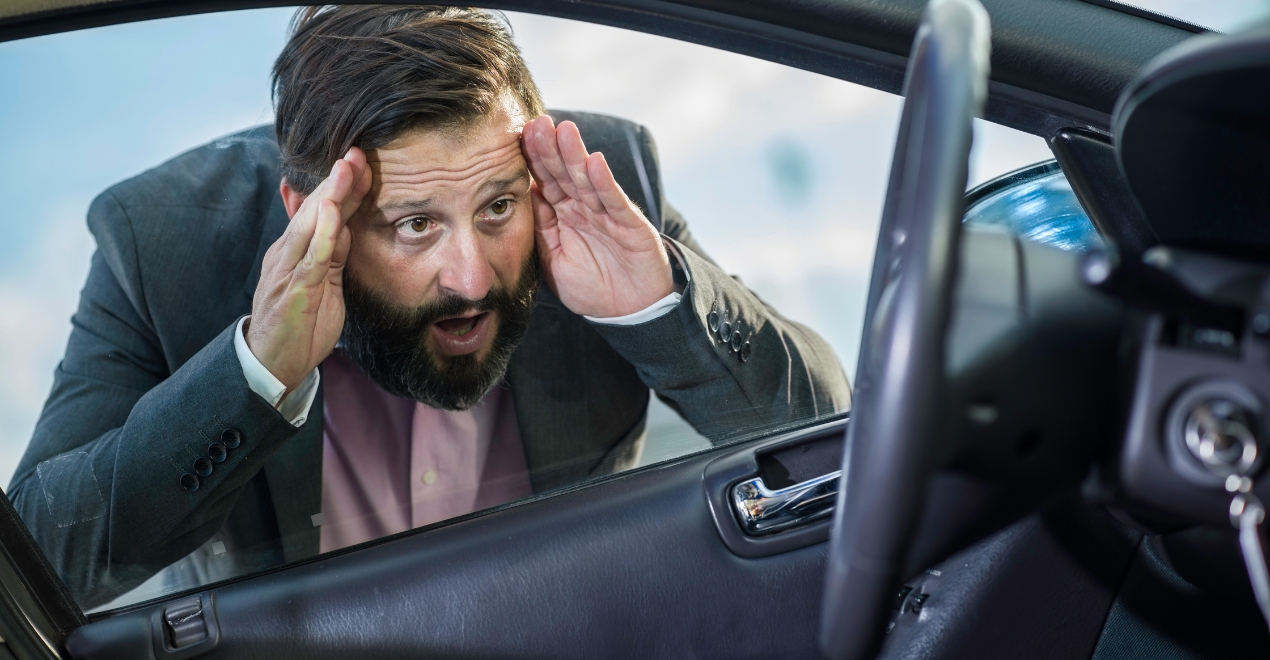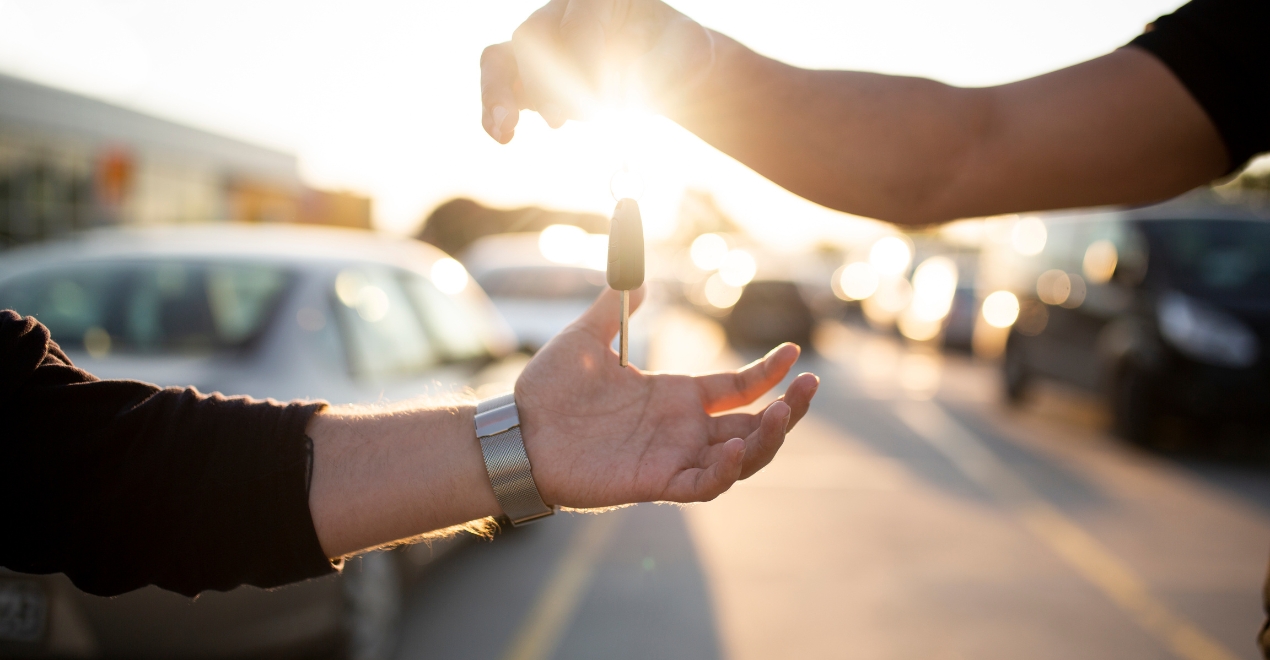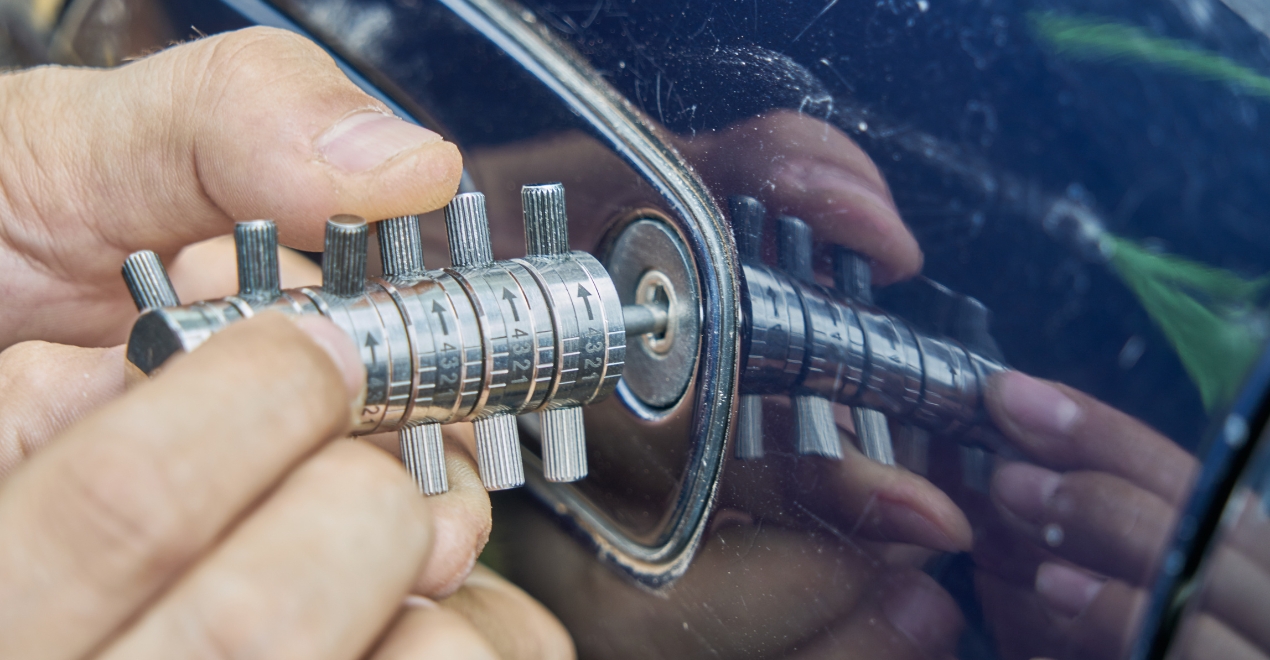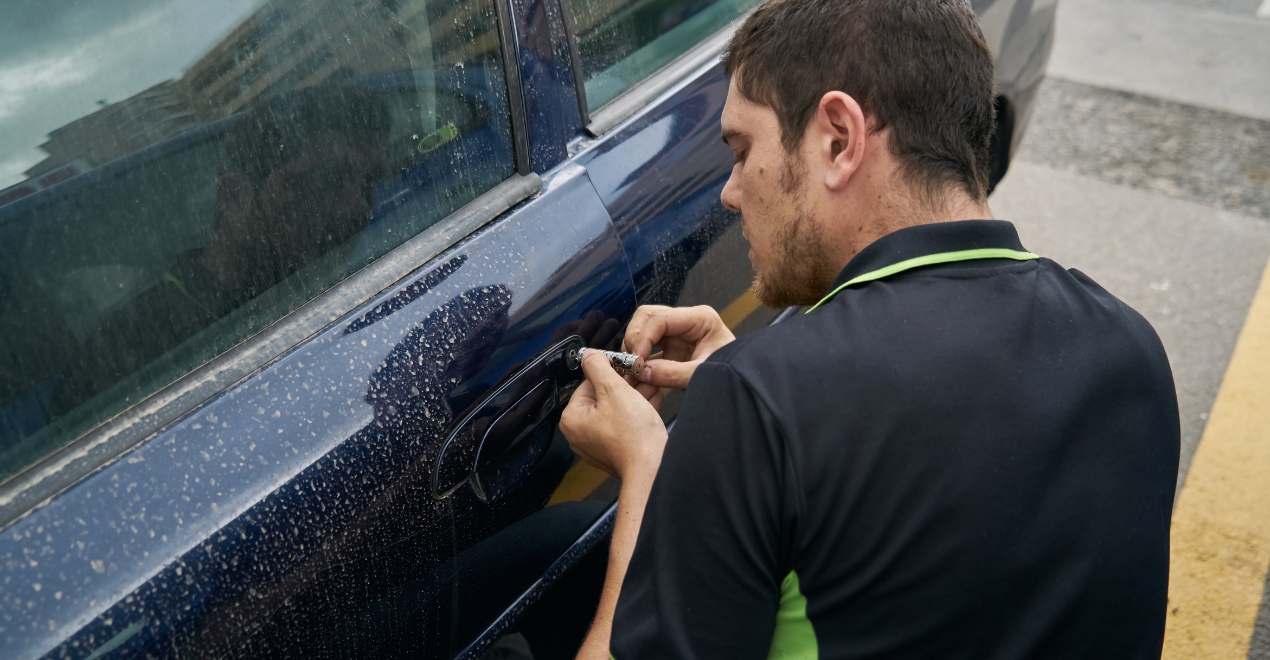Lock your keys in your car can be a stressful experience. The initial panic might cloud your judgment, but fret not! There are several solutions you can explore to regain access to your vehicle without causing damage. This guide delves into various methods for unlocking a car with locked-in keys, from DIY techniques to calling for professional assistance.
Staying Calm and Assessing the Situation: The First Steps

Before diving into unlocking techniques, take a moment to calm down and assess the situation. Panicking can lead to rushed decisions that might damage your car or further complicate the situation. Here are some initial steps to consider:
- Double-Check All Doors: It might seem obvious, but sometimes the solution is simpler than you think. Double-check all car doors, including the trunk (if applicable) to ensure they are truly locked. Perhaps a door was not fully shut, and a gentle tug is all it takes to gain entry.
- Look for Spare Keys: Do you have a spare key hidden somewhere on your vehicle, like a magnetic key box attached to the undercarriage? Check for any designated spare key locations recommended in your car’s owner’s manual.
- Consider Roadside Assistance: If you have roadside assistance coverage as part of your car insurance or a separate membership, contact them immediately. They typically offer lockout services as part of their roadside assistance package.
DIY Techniques for Unlocking Your Car (Use with Caution)

If you’re comfortable with some DIY approaches and don’t have roadside assistance, here are a few methods to try, but proceed with caution as some techniques might not work on all car models or could potentially damage your vehicle:
- The Slim Jim Method (For Older Cars): This technique utilizes a long, flat metal tool called a slim jim to manipulate the car’s interior door lock mechanism. While effective on older vehicles with mechanical locks, slim jims are generally ineffective on modern cars with electronic locking systems. Additionally, improper use of a slim jim can damage the car’s interior trimming or locking mechanism.
- The Coat Hanger Method (For Specific Vehicles): This method involves using a wire coat hanger to create a tool that can reach through a slightly open window and manipulate the car’s interior door handle or unlock button. However, the effectiveness of this method depends heavily on the specific car model and the design of the door handle or unlock button. Bending a coat hanger the wrong way can render it useless or potentially damage the car’s interior. It’s crucial to research specific instructions for your car model before attempting this method.
- The Wedge and Air Pump Method (For Newer Cars with Keyless Entry): This method involves creating a small gap between the car door and the frame using a wedge (like a tire iron) and then inflating an air pump (like a bicycle pump) into the gap to create space. The goal is to reach inside the car through the created gap and activate the car’s unlock button on the key fob that might be stuck inside the vehicle. While this method holds some promise for newer cars with keyless entry systems, it requires careful execution to avoid damaging the car’s door or frame.
Important Note: Before attempting any DIY methods, carefully research specific instructions tailored to your car model. Using the wrong technique or excessive force can damage the car’s locking mechanism, window, or door frame, leading to costlier repairs. If you’re unsure about any DIY method, it’s always advisable to err on the side of caution and call a professional locksmith.
Calling a Professional Locksmith: When DIY Isn’t the Answer

If you’re uncomfortable with DIY techniques, don’t have the necessary tools, or your car has a modern electronic locking system, calling a professional locksmith is the safest and most reliable course of action. Locksmiths have the expertise and equipment to unlock your car quickly and efficiently without damaging the vehicle.
Here are some benefits of calling a professional locksmith:
- Expertise: Locksmiths possess the knowledge and skills to handle a wide range of car locking mechanisms, including modern electronic locking systems. They can unlock your car without causing any harm.
- Speed and Efficiency: Locksmiths typically arrive quickly and can unlock your car in a timely manner, minimizing the time you’re stranded.
- 24/7 Availability: Many locksmiths offer 24/7 emergency services, so you can reach them any time of day or night, regardless of when you lock yourself out.
- Additional Services: Locksmiths can not only unlock your car but may also offer additional services such as rekeying your car’s locks if you’ve lost all your keys or creating spare keys.
Preventing Lock your keys in your car: Taking Proactive Measures

The best way to deal with a locked-out situation is to avoid it altogether. Here are some proactive measures you can take to minimize the risk of lock your keys in your car:
- Carry a Spare Key: Always keep a spare key readily available in a safe place, like with a trusted friend or family member. Avoid keeping the spare key in your purse or wallet, as you might accidentally lock both sets of keys in the car. Consider a magnetic key box attached discreetly to the underside of your car as a last resort option, but be mindful of potential security risks.
- Program Your Phone (For Newer Cars): Many newer cars with keyless entry systems allow you to program your smartphone as a digital key. This eliminates the risk of forgetting or losing a physical key altogether.
- Develop a Habit: Get into the habit of double-checking that you have your keys before locking your car door. A quick mental note or touching your pockets as you exit the vehicle can significantly reduce the chances of accidentally locking yourself out.
- Invest in a Key Finder: Consider investing in a key finder gadget that can be attached to your keychain and sync with your phone via Bluetooth. These gadgets can help you locate your misplaced keys within a certain range.
Conclusion
Lock your keys in your car can be frustrating, but with the right approach, you can regain access to your vehicle without unnecessary stress or damage. By considering the options outlined above – from DIY techniques (used with caution) to calling a professional locksmith – you can choose the course of action that best suits your comfort level and situation. Remember, prevention is always better than cure. Developing habits to avoid lockouts in the first place and having a plan in case it does happen will ensure peace of mind for your future journeys. Locked out and in need of rescue? Crossroads Helpline is just a call away.

